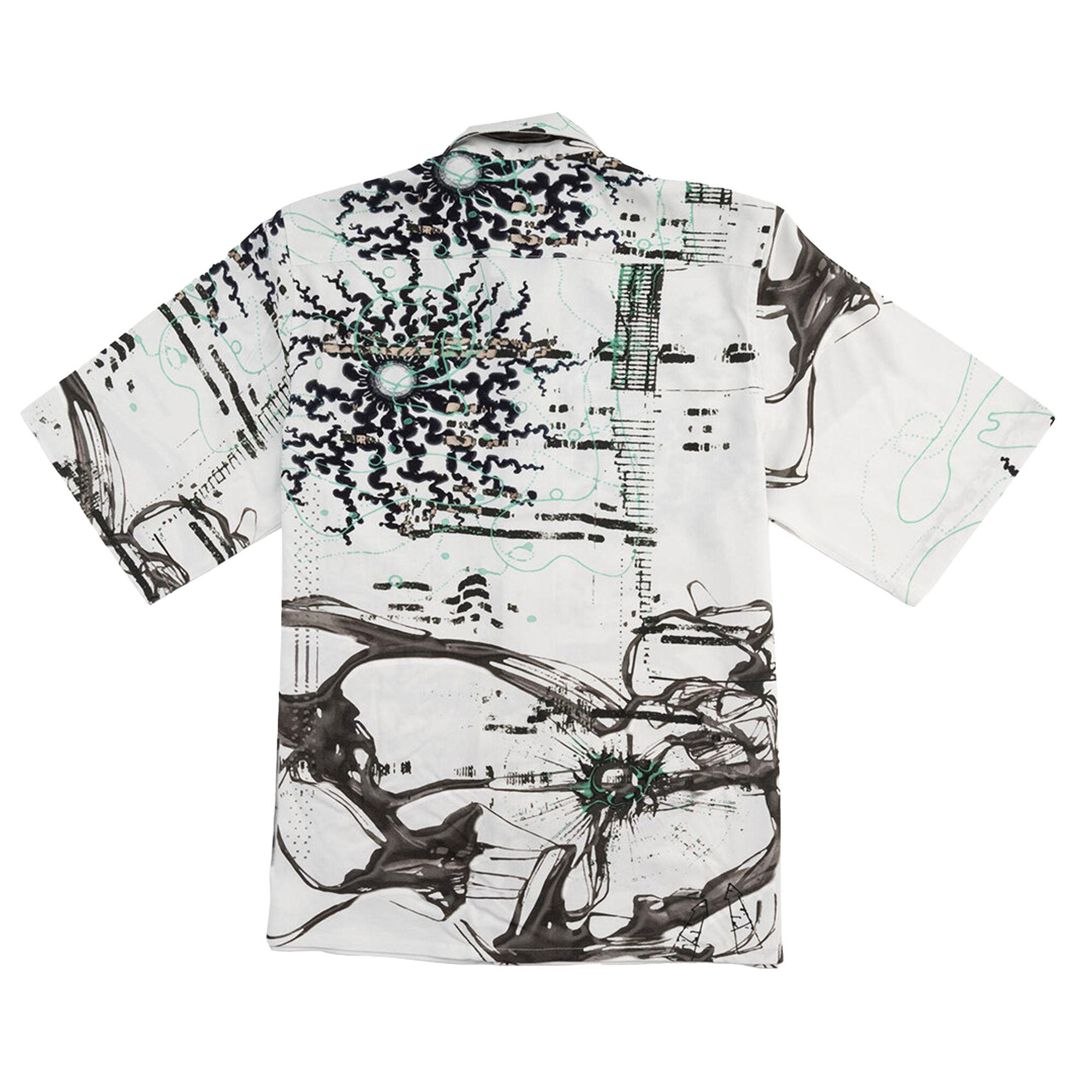 Image 1 of 4
Image 1 of 4

 Image 2 of 4
Image 2 of 4

 Image 3 of 4
Image 3 of 4

 Image 4 of 4
Image 4 of 4





Notation Rayon Shirt (Natural)
100% Rayon
Cement sublimated dyed garment with all over prints
Double front pockets with coconut wood buttons
Oversized boxy fit with shorter body length and longer sleeves
Hand wash with cold water | Hang dry, do not tumble dry | Iron on reverse, medium-hot | Fabric creases easily, recommend hanging after iron
Model is 174cm and wears a size M
The graphic is inspired by experimental notations of music from the 1900s onwards.
100% Rayon
Cement sublimated dyed garment with all over prints
Double front pockets with coconut wood buttons
Oversized boxy fit with shorter body length and longer sleeves
Hand wash with cold water | Hang dry, do not tumble dry | Iron on reverse, medium-hot | Fabric creases easily, recommend hanging after iron
Model is 174cm and wears a size M
The graphic is inspired by experimental notations of music from the 1900s onwards.
100% Rayon
Cement sublimated dyed garment with all over prints
Double front pockets with coconut wood buttons
Oversized boxy fit with shorter body length and longer sleeves
Hand wash with cold water | Hang dry, do not tumble dry | Iron on reverse, medium-hot | Fabric creases easily, recommend hanging after iron
Model is 174cm and wears a size M
The graphic is inspired by experimental notations of music from the 1900s onwards.
The Inspiration
Amongst the other garments like the Rave Lights Tee, the Notation Rayon Shirt draws a great amount of inspiration from experimental notations and scoring of music in the early to mid 1900s.
The design also heavily draws inspiration from experimental artists and composers like Iannis Xenakis take on an architectural and mathematical approach towards music, creating emotional landscapes that are carefully and intricately designed.
About Iannis Xenakis
In short, Xenakis is a greek composer who was trained as an architect. In his early 20s, he fought against the Communists. During the battle, a shrapnels from the blast of a British tank caused him a horrendous facial injury, leaving him blind in one eye.

After his exile to Paris, he was sentenced to death but it was eventually mitigated to a prison term. After which he returned and eventually became one of the greatest creative figures of the century:
“An architect who trained, worked, and often transcended the inspiration of his mentor and boss, Le Corbusier; an intellectual whose physical and mathematical understanding of the way individual particles interact with each other and create a larger mass - atoms, birds, people, and musical notes - would produce one of the most fertile and prophetic aesthetic explorations in musical history; and above all a composer, whose craggily, joyously elemental music turned collections of pitches and rhythms and instruments into a force of nature, releasing a power that previous composers had only suggested metaphorically but which he would realise with arguably greater clarity, ferocity, intensity than any musician, before or since”
Pithoprakta
Written in 1955, Pithoprakta is considered one of Xenakis’ most formidable work. The piece is written for a string orchestra with 46 separate solo parts. It was premiered by conductor Hermann Scherchen in March 1957.

The word Pithoprakta translates to "actions through probability". This relates to Jacob Bernoulli's law of large numbers which states that as the number of occurrences of a chance event increases, the more the average outcome approaches a determinate end.
The piece is based on the statistical mechanics of gases, Gauss's law, or Brownian motion. Each instrument is conceived as a molecule obeying the Maxwell–Boltzmann distribution law, with Gaussian distribution of temperature fluctuation.





